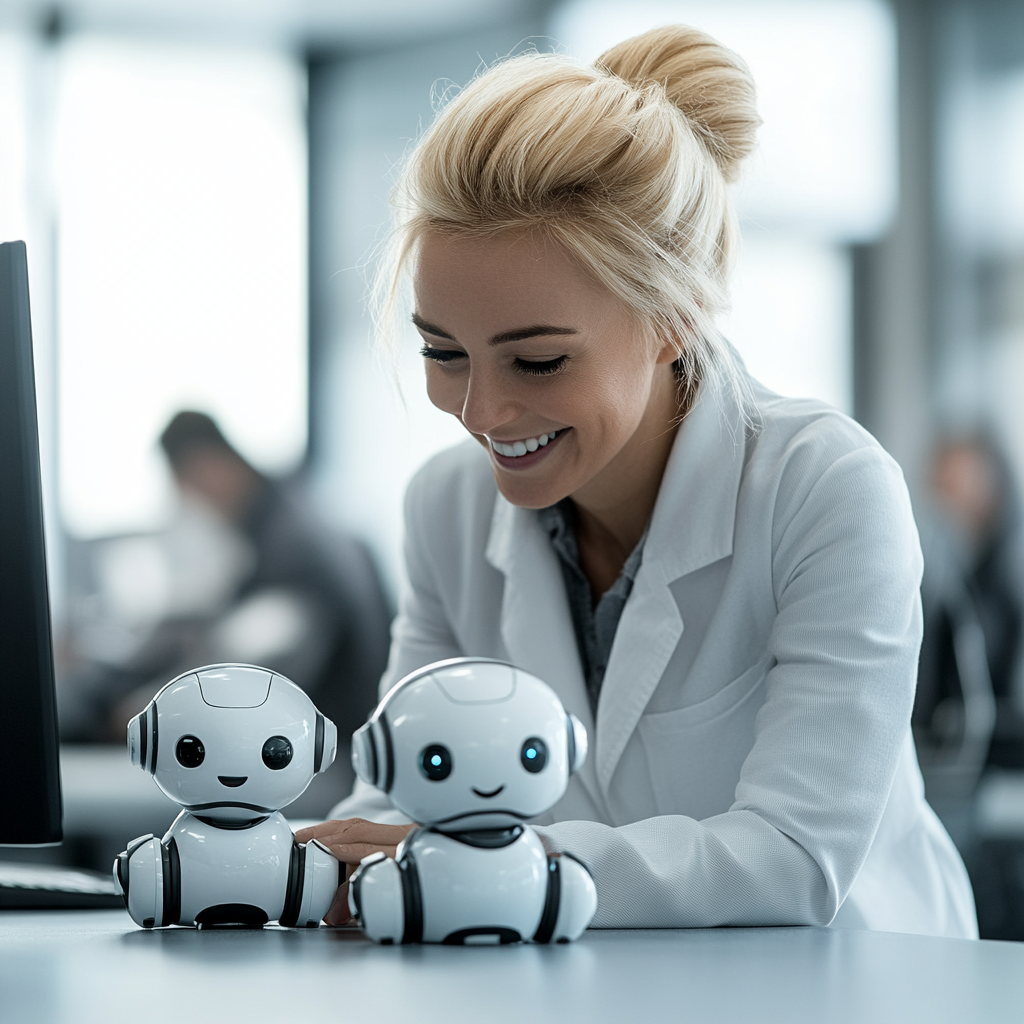Understanding the Target Audience for NVIDIA’s GraspGen
The primary audience for NVIDIA’s GraspGen includes robotics engineers, AI and machine learning researchers, and business leaders in automation sectors. These professionals are deeply involved in developing robotic systems aimed at enhancing the efficiency and effectiveness of robotic grasping tasks.
Pain Points
- Difficulty in achieving robust and generalizable 6-degree-of-freedom (6-DOF) grasping across various applications.
- High costs associated with collecting and annotating real-world grasp datasets.
- Challenges in adapting existing grasping algorithms to new gripper types and complex environments.
Goals
- To improve the reliability and accuracy of robotic grasping in diverse scenarios.
- To leverage advanced simulation techniques to reduce dependence on real-world data.
- To foster innovation in robotic applications that rely on effective manipulation capabilities.
Interests
The target audience is particularly interested in advancements in AI and machine learning technologies relevant to robotics, the research and development of new algorithms for grasping and manipulation, and collaboration within the robotics community.
Communication Preferences
This audience prefers technical, concise communication that includes data and case studies to support claims. They engage with content that offers practical insights, such as implementation details and performance benchmarks.
NVIDIA AI Releases GraspGen: A Diffusion-Based Framework for 6-DOF Grasping in Robotics
Robotic grasping is crucial for automation and manipulation across various fields, including industrial picking and humanoid robotics. Despite significant research, achieving reliable 6-DOF grasping remains a challenge. NVIDIA’s GraspGen introduces a novel diffusion-based framework aimed at enhancing performance, flexibility, and real-world reliability in grasp generation.
The Grasping Challenge and Motivation
Accurate grasp generation in 3D space requires algorithms that can adapt to unknown objects, diverse gripper types, and various environmental conditions. Traditional model-based planners often struggle with precise object pose estimation, making them impractical for real-world applications. Current data-driven approaches frequently fail to generalize well, particularly when transitioning to new grippers or complex environments.
Key Idea: Large-Scale Simulation and Diffusion Model Generative Grasping
GraspGen shifts the focus from expensive real-world data collection to large-scale synthetic data generation. It utilizes the Objaverse dataset, which includes over 8,000 object meshes, generating more than 53 million grasps in simulation. Grasp generation is framed as a denoising diffusion probabilistic model (DDPM) operating within the SE(3) pose space, allowing for the capture of valid grasp distributions on complex objects.
Architecting GraspGen: Diffusion Transformer and On-Generator Training
GraspGen features a Diffusion Transformer Encoder that employs a PointTransformerV3 backbone to encode 3D point cloud inputs into latent representations. This architecture enhances grasp quality and computational efficiency compared to previous models. The on-generator training method allows the discriminator to learn from samples produced during training, improving the filtering of false positives.
Multi-Embodiment Grasping and Environmental Flexibility
GraspGen demonstrates its capabilities across multiple gripper types, including parallel-jaw grippers, suction grippers, and multi-fingered grippers. The framework shows robust performance with both partial and complete point clouds, excelling in cluttered scenes and achieving significant success rates.
Benchmarking and Performance
In evaluations on the FetchBench benchmark, GraspGen surpassed state-of-the-art models by nearly 17% in task success rates. Real-world experiments with a UR10 robot achieved an impressive 81.3% overall grasp success, significantly outperforming previous systems.
Dataset Release and Open Source
NVIDIA has publicly released the GraspGen dataset, which includes approximately 53 million simulated grasps and 8,515 object meshes, available under Creative Commons licenses. The GraspGen codebase and pretrained models are also open-sourced, encouraging further development within the robotics community.
Conclusion
GraspGen advances 6-DOF robotic grasping by introducing a diffusion-based framework that excels in various environments and with multiple gripper types. Its innovative training methods enhance grasp scoring, resulting in improved success rates in both simulation and real-world applications. By releasing the dataset and code, NVIDIA supports ongoing innovation and collaboration in the field of robotics.
FAQ
- What is GraspGen? GraspGen is a diffusion-based framework developed by NVIDIA for improving 6-DOF robotic grasping.
- How does GraspGen improve grasping performance? It utilizes large-scale synthetic data generation and advanced simulation techniques to enhance the reliability and accuracy of grasping.
- What types of grippers does GraspGen support? GraspGen supports various gripper types, including parallel-jaw, suction, and multi-fingered grippers.
- Where can I access the GraspGen dataset? The GraspGen dataset, which includes millions of simulated grasps, is publicly available under Creative Commons licenses.
- What are the key benefits of using GraspGen? Key benefits include improved grasp success rates, flexibility in diverse environments, and reduced reliance on expensive real-world data collection.




























